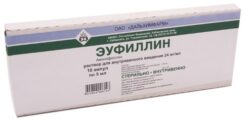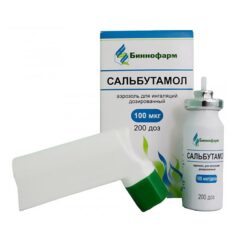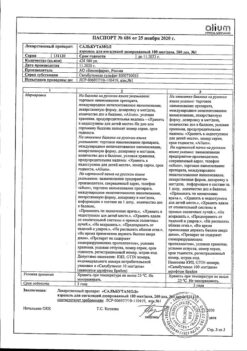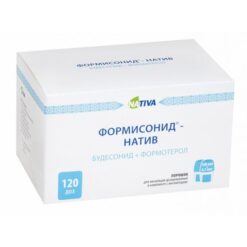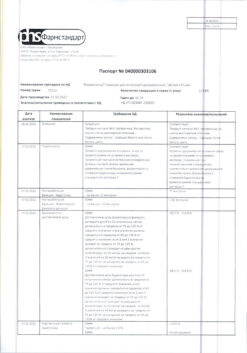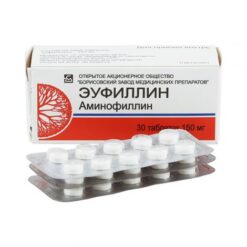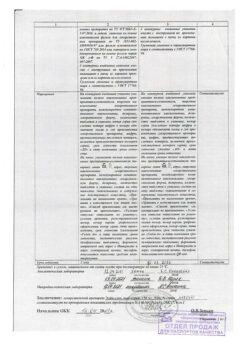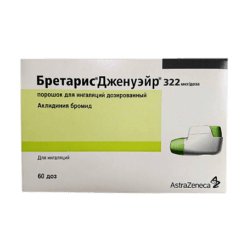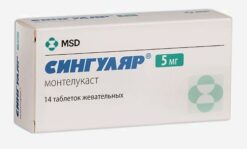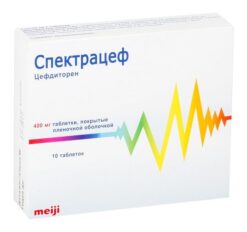No products in the cart.
Budoster, spray 100 mcg/dose, 10 ml
€1.00
Out of stock
(E-mail when Stock is available)
Description
Budoster is a GCS for intranasal use. It has a pronounced anti-inflammatory and anti-allergic effect. When used in therapeutic doses it has practically no resorptive action. It has no mineralocorticoid activity and is well tolerated during long-term use. The drug has an inhibitory effect on the release of inflammatory reaction mediators, reduces the number of mast cells and eosinophilic granulocytes.
Budesonide reduces release of toxic proteins from eosinophils, free radicals from macrophages and lymphokines from lymphocytes. It also reduces the binding of adhesive molecules to endothelial cells, thus reducing the flow of leukocytes to the site of allergic inflammation. Budesonide increases the number of β-adrenoreceptors in smooth muscles. The drug inhibits phospholipase 2A activity, which leads to inhibition of the synthesis of prostaglandins, leukotrienes and Freund’s complete adjuvant (PAF), inducing an inflammatory reaction. Budesonide also inhibits histamine synthesis, which leads to a decrease in its levels in mast cells.
Budesonide reduces the severity of symptoms in allergic rhinitis, inhibits the late and early phases of the allergic reaction and reduces inflammation in the upper respiratory tract. Therapeutic effect develops on average in 5-7 days.
Pharmacokinetics
Intake
After inhalation of 400 mcg budesonide, Cmax in plasma is reached within 0.7 h and is 1 nmol/L. Only about 20% of the intranasally administered dose reaches the systemic bloodstream.
Distribution
Because of good distribution in tissues and binding to plasma proteins, the apparent Vd is 301 L.
Metabolism
The systemic bioavailability of budesonide is low because more than 90% of the absorbed drug is inactivated by one-step metabolism in the liver. GCS metabolite activity does not exceed 1%.
T1/2 – 2-2.8 hours. Excretion through the intestine as metabolites is 10%, and by the kidneys – 70%. Plasma concentration of budesonide is increased in patients with liver disease.
Indications
Indications
Active ingredient
Active ingredient
Composition
Composition
1 dose contains:
the active ingredient:
budesonide 100 mcg
excipients:
dextrose,
avicel (microcrystalline cellulose and sodium carmellose in the ratio of 9:1),
Potassium sorbate,
Polysorbate 80,
Dinitrium edetate,
Hydrochloric acid to pH 4.5,
Purified water.
How to take, the dosage
How to take, the dosage
Adults and children over 6 years of age at the start of therapy 100 mcg in each nostril 2 times/day. The usual maintenance dose is 50 mcg in each nostril 2 times/day or 100 mcg in each nostril once daily in the morning. The maintenance dose should be the lowest effective dose to relieve rhinitis symptoms. The maximum single dose is 200 mcg (100 mcg in each nostril) and the maximum daily dose is 400 mcg for up to 3 months.
The full therapeutic effect of Budoster requires regular and appropriate use.
If Vine has been missed, it should be taken as soon as possible, but at least 1 hour before the next dose.
Children use the drug under adult supervision.
Interaction
Interaction
Phenytoin, phenobarbital, rifampicin may decrease efficacy; metandienone, estrogens, ketoconazole and other potent CYPCA4 isoenzyme inhibitors may increase it.
Special Instructions
Special Instructions
The use of budesonide nasal spray is not recommended in patients with respiratory tract infections.
Patients should be informed that the effect of budesonide nasal spray is reached after an average of 5-7 days.
If symptoms do not decrease after three months of treatment, the drug should be discontinued.
When switching from treatment with systemic glucocorticosteroids to topical GKS, there is a risk of adrenal insufficiency, so caution is required during the recovery period of hypothalamic-gyophyseal-adrenal system function. The drug should be withdrawn by gradual dose reduction until the normalization of hypothalamic-pituitary-adrenal function. During the dose reduction phase, some patients may show symptoms of corticosteroid withdrawal, such as muscle and/or joint pain, apathy, depression. If such symptoms are detected, a temporary increase in the dose of systemic GCS may be required, and further withdrawal at a slower pace thereafter.
In order to achieve therapeutic effect in allergic rhinitis, regular administration of the drug is required.
It is recommended to monitor the growth rate of children receiving prolonged treatment with nasal GCS. The child’s growth rate slows down; the dose of nasal spray should be reduced.
Because GCSs slow wound healing, care should be taken when prescribing Budoster to patients who have recently had trauma or surgery to the nose.
Budesonide nasal spray should be avoided in the eyes.
In long-term therapy with the drug, nasal mucosa should be evaluated.
In prolonged use of nasal GCS in children, dynamic growth monitoring is recommended. If growth slows down, the pediatrician should reconsider the way the drug is used, with the goal of reducing the dose and switching to the lowest therapeutic dose at which symptom control is possible.
The effect on the ability to drive and operate machinery
Budoster has no effect on the ability to drive or operate machinery.
Contraindications
Contraindications
With caution: recent nasal surgery, recent nasal trauma, tuberculosis.
Side effects
Side effects
Local reactions: burning sensation; crusting of nasal mucosa, dizziness. The risk of systemic effects should be considered, including inhibition of adrenal function, growth retardation in children and adolescents, decreased bone mineral density, symptoms of hypercorticism. cataract and glaucoma when using budesonide in high doses. Very common – irritation of the mucous membrane of the search cavity. At the beginning of therapy, for a short time, rhinorrhea, excoriations may occur. Often – sneezing; throat farting and dryness, pain in the nose and throat. Infrequent – nasal bleeding; candidiasis of the mucous membrane of the pharynx and nasal cavity, particularly after prolonged therapy. Very rarely – nasal mucosal atrophy, nasal mucosal ulceration, perforation of the nasal septum; anosmia.
Allergic reactions: rare – allergic reactions (including dermatitis, rash, urticaria).
Digestive system disorders: rarely – nausea, vomiting, gastralgia.
Cardiovascular system disorders: very rare – palpitations.
Nervous system disorders: rarely – myalgia, somnolence, headache.
Respiratory system disorders: very rare – cough, stuffy nose.
Overdose
Overdose
Symptoms (in chronic overdose): acne, Cushing’s syndrome, dysmenorrhea.
Treatment: gradual withdrawal of the drug.
Pregnancy use
Pregnancy use
The use of the drug Budoster during pregnancy is allowed only if the expected benefits to the mother exceed the possible risk to the fetus.
If the drug has to be prescribed during lactation, breastfeeding should be stopped.
Similarities
Similarities
Additional information
| Shelf life | 2 years. |
|---|---|
| Conditions of storage | Store at a temperature not exceeding 25 ° C. Do not freeze. |
| Manufacturer | Mipharm S.p.A., Italy |
| Medication form | nasal spray |
| Brand | Mipharm S.p.A. |
Related products
Buy Budoster, spray 100 mcg/dose, 10 ml with delivery to USA, UK, Europe and over 120 other countries.


